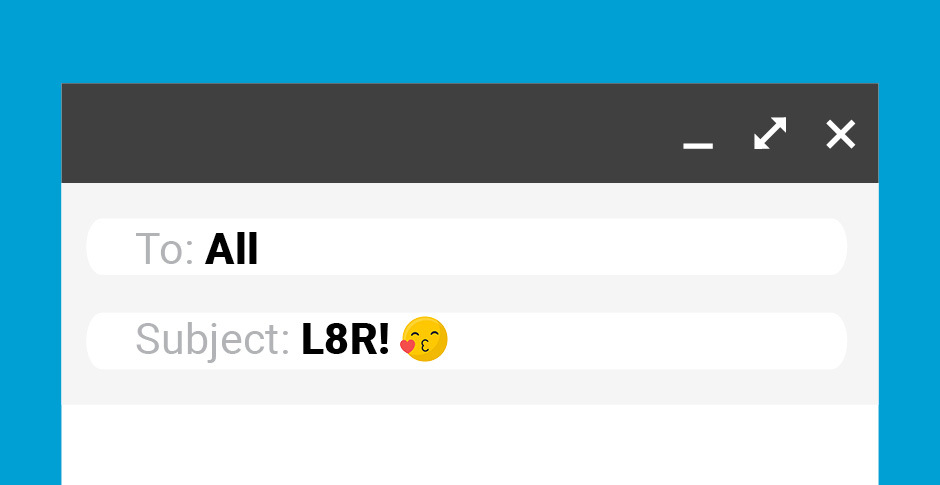What to include in your farewell email
Moving on from your workplace? Along with packing your favourite mug or organising a team lunch, a goodbye note should be on your last to-do list.
Whatever’s next for you, writing a few words of appreciation to your team is one way to leave on a good note.
Here Suzie McInerney, CEO of Six Degrees Executive shares her advice on writing a genuine, professional and positive farewell email.
How to write a great farewell
- Keep it short and sharp.
You might have a lot to say but consider saving personal anecdotes for face-to-face conversations. Your writing style can be informal – just remember keep it professional and check for any typos. - Be inclusive.
This is your time to recognise the company and your team as a whole. Avoid focusing on any one colleague in particular – that way you won’t leave anyone out. You can always reach out to people individually in your own time. - Demonstrate gratitude.
Make sure you thank your colleagues and managers for all you’ve learnt or been part of during your time there. - Provide a way to stay in touch.
If you’d like to, you can provide your personal contact details. - Show your personality!
If you’re leaving on good terms, there’s no reason your farewell email can’t be fun and light-hearted. Just be sure to use your best judgement as to whether humour is appropriate.
What to avoid
- Don’t write an essay.
Keep it short and to the point. People don’t need to read the ins and outs of your tenure – just a few highlights. - Keep your emotions in check.
If you’re leaving under challenging circumstances, save a draft then re-read your email with fresh eyes. If you’re uncertain, ask a friend to read it before you send it out. Remember, less is definitely more when it comes to emotion. - Don’t be negative.
Your farewell communication leaves a paper trail and networks are smaller than you think. Keep it positive, even if you’re leaving under difficult circumstances. You never know when the bridges you haven’t burned could come in handy again.
How and when to send your farewell
McInerney recommends sending your email on your second last day. “This will give people time to reply if they wish to,” she says. “You may even be surprised to see who comes out of the woodwork to bid you adieu.”
Also, think carefully about who should receive your farewell communication. “Use your discretion about whether it’s appropriate to send a company-wide email or if it’s better to send to your immediate team only,” McInerney says.
Farewell email template
Here’s a good starting point for you to customise with your own experience:
Email subject: Your Name – Time to move on
Dear colleagues,
Paragraph 1: Let your co-workers know that you’re leaving the company and when. Always mention the specific day you’ll be leaving, so your colleagues have the opportunity to say goodbye.
Paragraph 2: Thank your colleagues for their support. Mention that you’ve enjoyed working with them and you'll miss them. It's up to you whether you want to tell them what you will be doing next.
For example, “I have enjoyed my time at Star Real Estate and I would like to thank you for being such a great team to work with. I’ve appreciated all the support and encouragement you have given me during my time here.
“I will miss working with you but I’m looking forward to exploring my interest in event coordination in my next role at Premier Events.”
Paragraph 3: Let your colleagues know how they can contact you. Include your personal email address or phone number.
In the last paragraph, say thanks once more and take the opportunity to wish your team well.
Kind regards,
Your First Name
